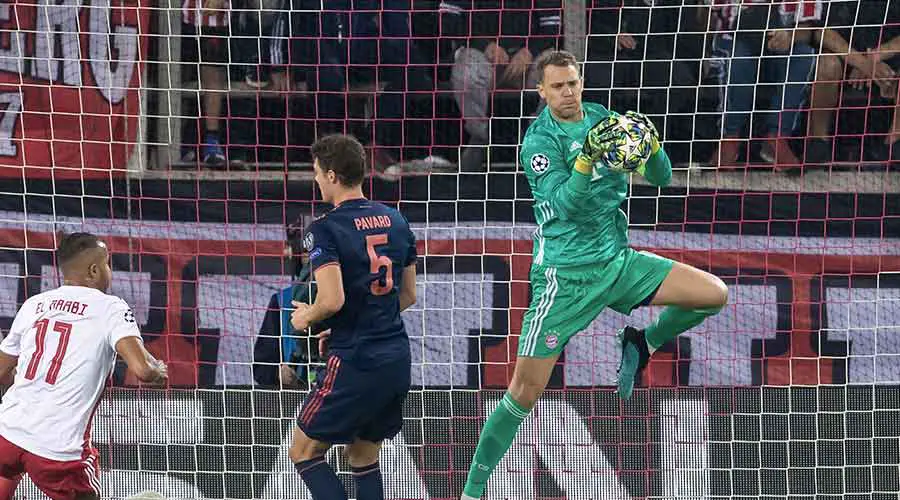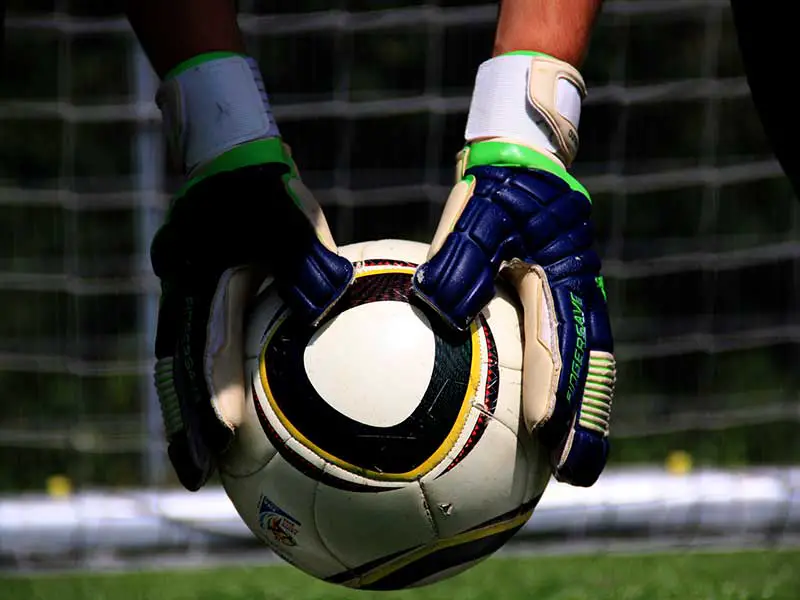How Long Can a Goalkeeper Hold the Ball in Soccer?
Soccer is a game of precision and skill – some would even argue that, in comparison to some other popular sports, it takes so much more to be a professional soccer player.
One of the most critical roles on the field (or the pitch) is the goalkeeper, the last line of defense (and in some cases the first line of attack) who prevents the opposing team from scoring goals. A key aspect of a goalkeeper’s play is handling the ball.
But how long can a goalkeeper actually hold onto the ball? In this article, we’ll explore the rules surrounding this topic and some tactical implications for both goalkeepers and outfield players.
The Six-Second Rule: A Brief Overview
FIFA‘s Laws of the Game dictate that a goalkeeper can only hold the ball for a maximum of six seconds after gaining possession. This rule, known as the “six-second rule,” was introduced to promote a faster pace of play and reduce time-wasting tactics in the goal area.
Feel free to take a look at the source since there are many tiny details regarding fouls you’ve probably never thought much about before.
After six seconds have passed, the goalkeeper must release the ball into play either by kicking, throwing, or rolling it. Failure to do so may result in an indirect free kick awarded to the opposing team.

Exceptions to the Rule
It’s important to note that the six-second rule is rarely enforced these days, even though it is still an official part of the rulebook.
Having said so, there are still a few scenarios where a goalkeeper might be allowed to hold the ball for longer:
- Injury: If the goalkeeper is injured, the referee may allow additional time for them to recover before releasing the ball.
- Stoppage in play: In case of a stoppage due to an injury (in this case of an outfield player as well) or other unforeseen circumstances, the goalkeeper may hold the ball until the game resumes. The referee will, in that case, increase the stoppage time.
- Obstruction by opponents: If an opponent deliberately obstructs the goalkeeper from releasing the ball, the referee may allow extra time or penalize the offending player.
These exceptions are at the referee’s discretion, and the six-second rule is still the standard expectation, although rarely enforced in today’s game.
Tactics for Goalkeepers
Experienced goalkeepers will use the six-second rule to their advantage, developing tactics to maximize their impact on the field:
- Quick distribution: A goalkeeper with accurate throws or kicks can quickly launch counterattacks, catching the opposition off-guard.
- Controlling the tempo: By varying the speed of their distribution, goalkeepers can help dictate the pace of the game, allowing their team to regroup or maintain pressure on the opposition.
- Communication: A good goalkeeper will stay in constant communication with their defenders, directing their movements and providing valuable information about the positioning of opposing players.
Pressing and Countering the Six-Second Rule
Outfield players can also exploit the six-second rule to their advantage:
- High pressing: By applying pressure on the goalkeeper as soon as they gain possession, outfield players can force errors or rushed distribution, potentially leading to goal-scoring opportunities.
- Anticipating distribution: Skilled players will read the goalkeeper’s intended distribution and intercept the ball, catching the opposing team off balance.
- Targeting weaknesses: If a goalkeeper is known for having a weak kick or throw, opponents can position themselves to exploit this vulnerability.
How Referees Enforce the Rule
Enforcing the six-second rule is often subjective and depends on the referee’s interpretation. In most cases, referees will use discretion and allow for a degree of flexibility, especially if the goalkeeper is not deliberately time-wasting. However, if a referee deems the goalkeeper to be excessively delaying the game, they may choose to issue a verbal warning or award an indirect free kick to the opposing team.

The Evolution of Goalkeeping and the Six-Second Rule
Since the introduction of the six-second rule, goalkeeping has evolved significantly, with an increased emphasis on footwork, distribution, and decision-making. Modern goalkeepers must possess a diverse skill set to adapt to the demands of the game, including:
- Ball control: The ability to handle and control the ball under pressure is crucial, as goalkeepers often need to play out from the back and contribute to their team’s build-up play.
- Decision-making: Goalkeepers must make split-second decisions when distributing the ball, choosing the best option to initiate an attack or retain possession.
- Positioning: Being aware of their positioning on the field allows goalkeepers to anticipate threats, intercept passes, and effectively organize their defense.
The six-second rule has also impacted coaching and player development, with more emphasis placed on nurturing goalkeepers who are comfortable with the ball at their feet and have excellent distribution skills.
Goalkeeper Training Drills to Improve Ball Distribution
In light of the six-second rule, goalkeepers must develop their ball distribution skills to excel on the field. Coaches and trainers have devised various drills to enhance these abilities and help goalkeepers become more effective in their role:
- Target practice: Set up targets at various distances and angles on the field, challenging goalkeepers to hit them with throws, kicks, and rolls. This drill helps improve accuracy and control.
- Pressure simulation: Create game-like scenarios where goalkeepers must distribute the ball quickly and accurately while under pressure from opposing players. This exercise develops composure and decision-making skills.
- Two-touch distribution: Encourage goalkeepers to take no more than two touches before releasing the ball, fostering quicker decision-making and enhancing their ability to distribute under pressure.
- Distribution races: Organize races where two or more goalkeepers compete to distribute the ball accurately and quickly to a designated target. This drill adds a competitive element to training and helps goalkeepers develop speed and precision.
Incorporating these drills into regular training sessions can significantly improve a goalkeeper’s distribution skills, allowing them to perform more effectively within the constraints of the six-second rule.
Conclusion
The six-second rule is an essential aspect of modern soccer, promoting a faster-paced and more exciting game. While goalkeepers must adhere to this rule, they can also employ various tactics to exploit its nuances. Outfield players, in turn, can use the rule to apply pressure and create opportunities for their team. As with many aspects of soccer, the enforcement of the six-second rule is often subjective and depends on the referee’s interpretation. The evolution of goalkeeping and the continuous development of new tactics and strategies ensure that the six-second rule remains a somewhat vital component in the ever-changing landscape of the beautiful game.
